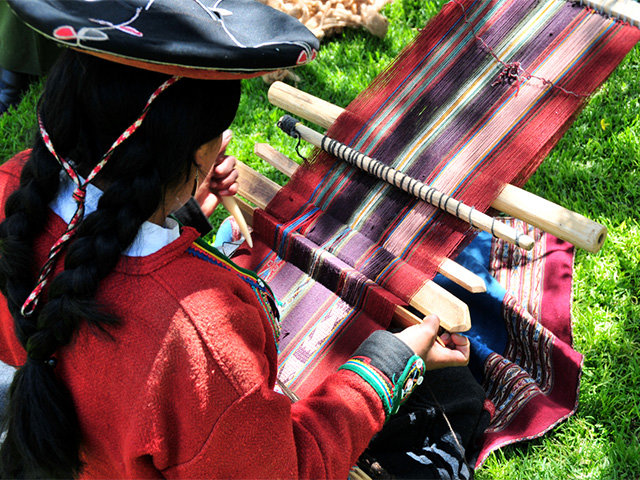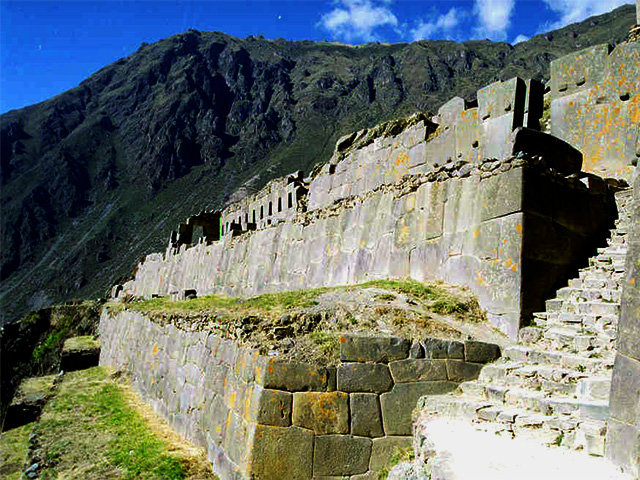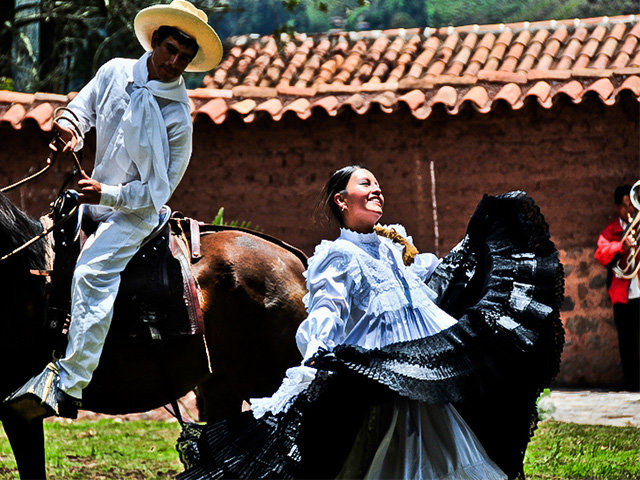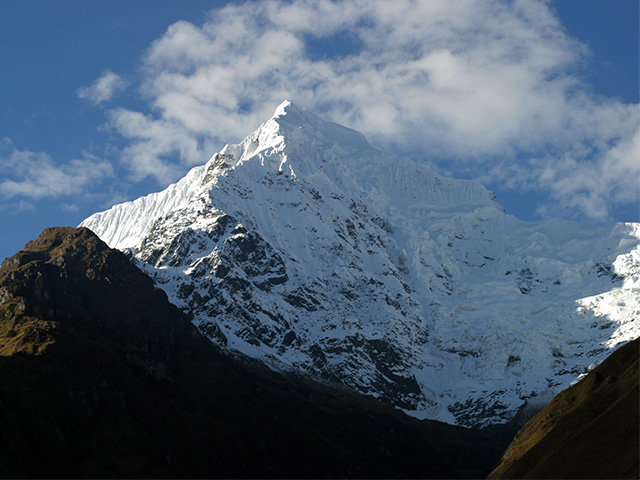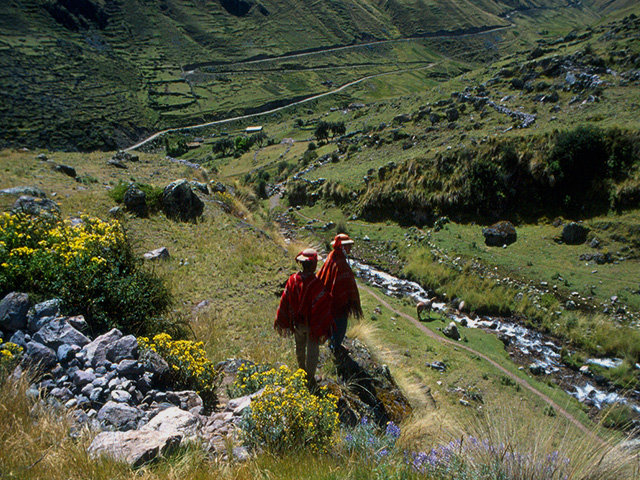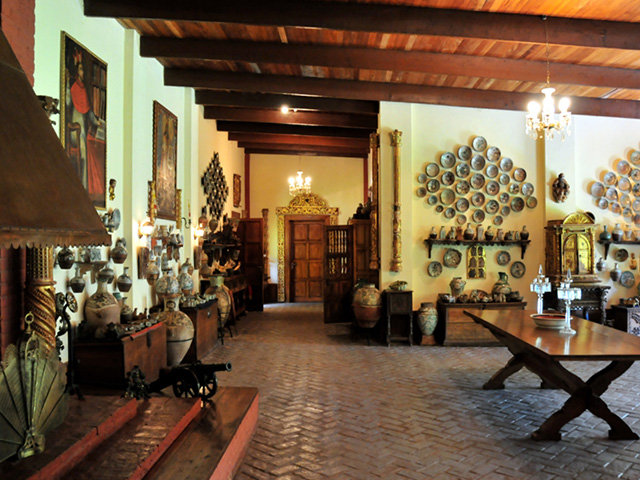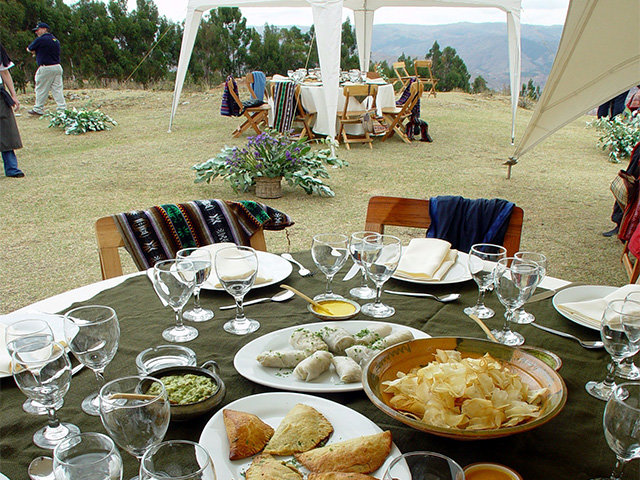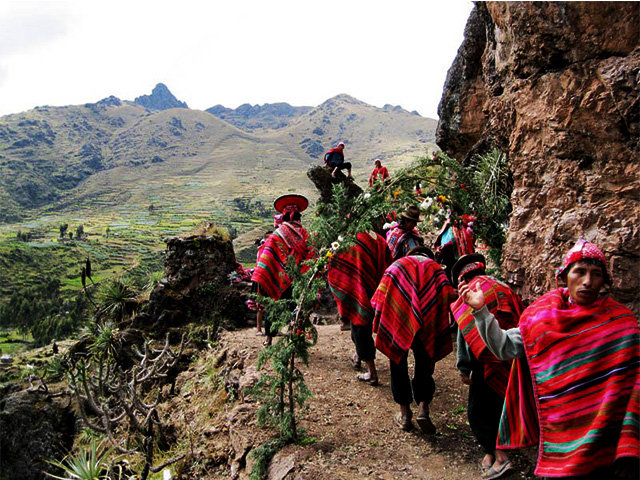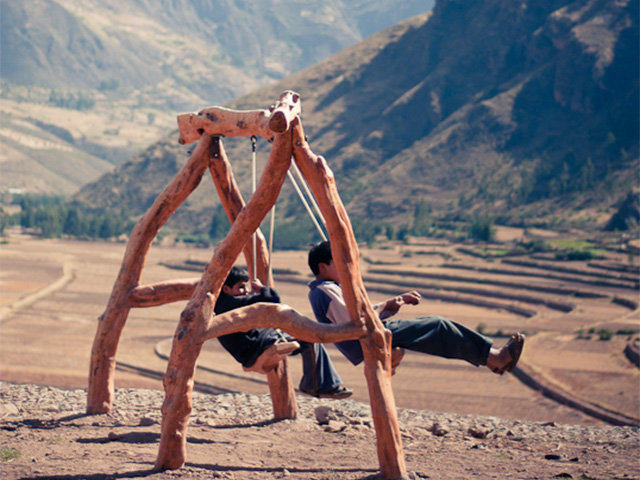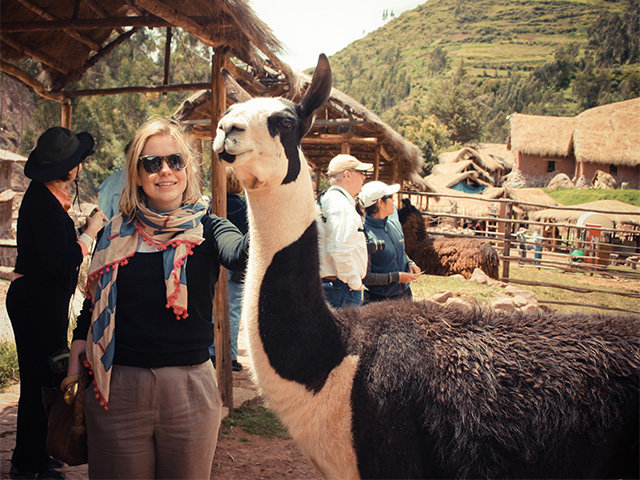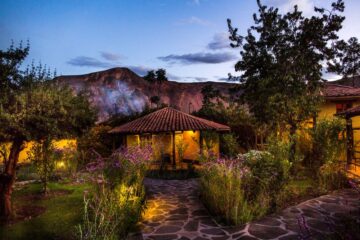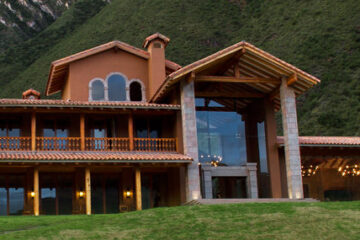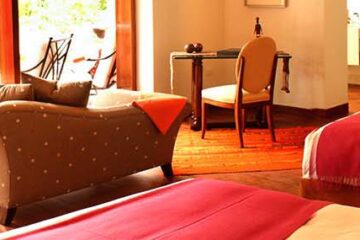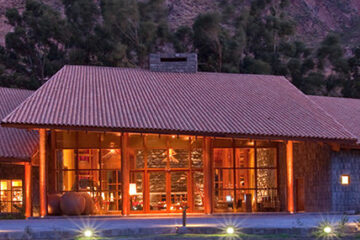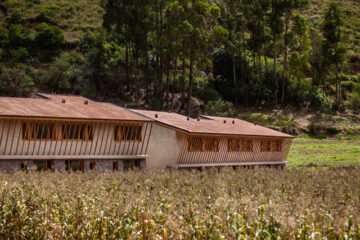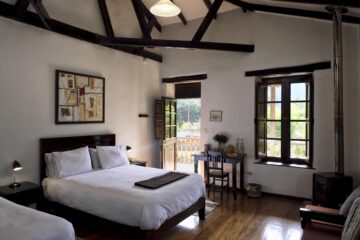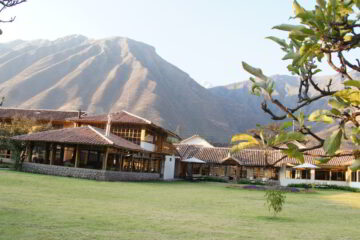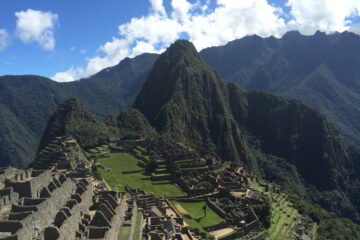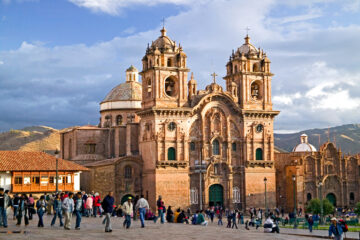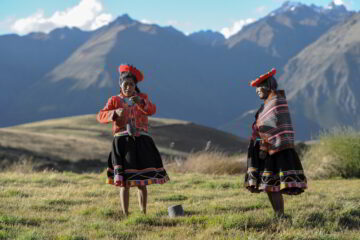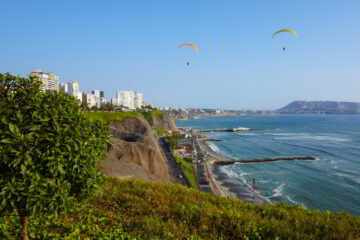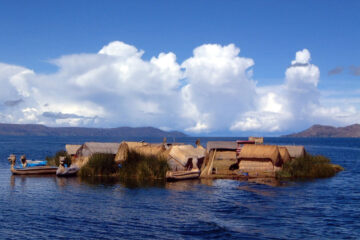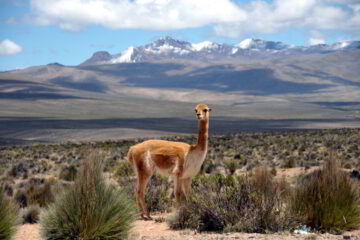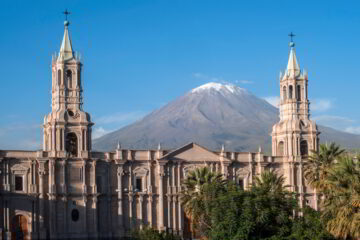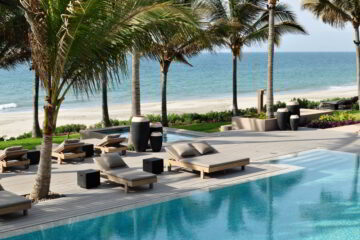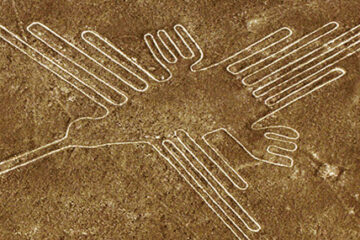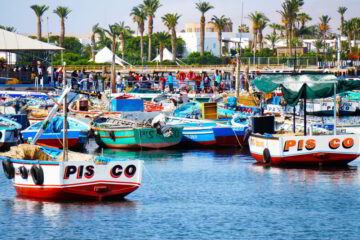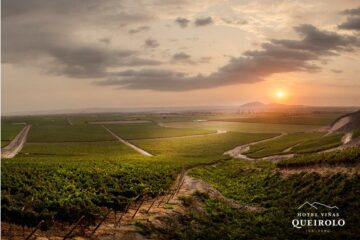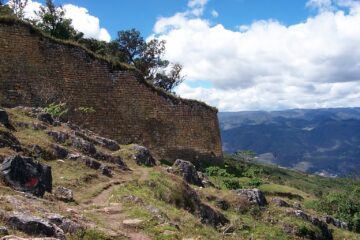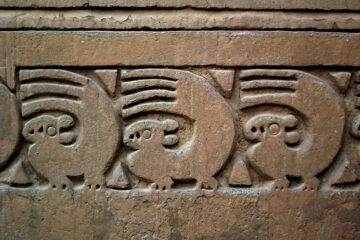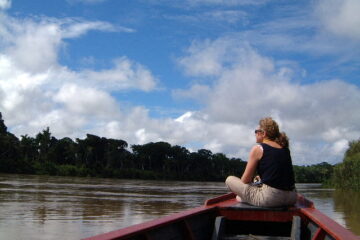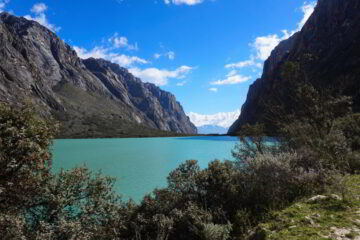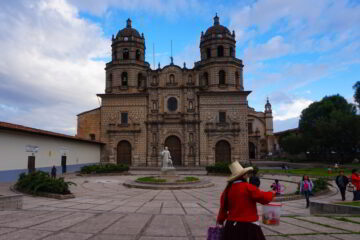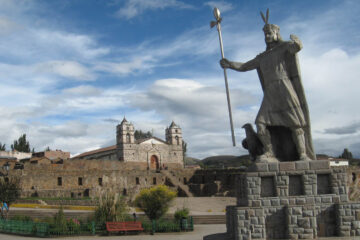The Sacred Valley – also called the Urubamba Valley – received its name for the beauty and fertility of its land. All travelers pass through the Sacred Valley and its sweeping landscapes en route to Machu Picchu.
With impressive ruins, traditional weaving villages and colonial towns, the Sacred Valley is a destination in its own right
Since colonial times, visitors have discovered this rich land dotted with picturesque Andean markets, impressive churches and remarkable Inca ruins. At lower altitude than Cusco, the climate is considerably milder here making it the chosen area by the Incas, and later Spanish Conquistadors, as a resting place where they established their estates and country homes. Today the Sacred Valley draws visitors to admire the array of Inca ruins found here, colorful markets and rural communities with their traditional ways of life. It is also an adventure activity hub, with biking, hikng, horseback riding and much more all on offer in this lush, idyllic landscape.
Recommended For
- History Enthusiasts
- Adventurers
- Families
- Nature Lovers
Things to do
- Explore important Incan ruins like Ollantaytambo Fortress and Pisac
- Get active by hiking, biking or horse-riding to Maras salt pans
- Escape the crowds and connect with the local culture visiting traditional weaving villages
- Dine at gourmet restaurant MIL by the Incan terraces of Moray
Sample journeys to Sacred Valley
We work hand-in-hand with you to craft a truly tailor-made Sacred Valley travel experience
The Pillars of Peru: Coast, Jungle, Mountain
An adventure across Peru’s unique geography
Guide to the Sacred Valley
The Sacred Valley is a highlight of any custom Peru tour, and spending at least a night in the Valley is a ‘must’. We recommend arriving in Cusco and transferring straight to the Sacred Valley by road (approx one and a half hours) – making stops at points of interest en route – to take advantage of the lower altitude and acclimatize, before visiting Machu Picchu and then returning to Cusco to see the city. With an array of luxury and charming hotels in the valley, it makes for an exceptional base to explore this verdant countryside and the villages, ruins and adventure activities it offers. Sites such as Pisac market these days are very much on the tourist path, but having planned tailormade tours for over two decades at Aracari we ensure you follow the best crowd avoidance routes possible and can introduce you to lesser-visited, magical places in the Sacred Valley.
Things to do in the Sacred Valley
Asides from the most popular places of interest mentioned below, at Aracari we have developed a number of unique excursions and day trips to lesser-known communities like Patakancha for an authentic insight into local life, visits to private Haciendas, one-day hikes such as Tipon or Maras and Moray, and 1-night camping treks like Huchuy Qosqo, all of which will make your visit to the area truly special and memorable.
Inca Ruins
The Sacred Valley is scattered with historic sites and Inca ruins. Ollantaytambo is one of the most well-preserved Incan towns in Peru, with terraces built into the hillside affording privileged views of the town today below. Sites of interest include: Pisac, Chinchero, Urubamba, Ollantaytambo, Andahuaylillas, Tipon, Pikillacta, Patakancha, Maras, Moray. These can be visited by car, or alternatively we can arrange adventure activities to some to hike or bike, for example, with a gourmet picnic set up in quiet, remote locations off the beaten path.
The Maras Salt Pans
This site consists of a large number of watered terraces that collect salt by evaporation from the saline waters that gush from an underground stream. Built in a similar way to agricultural terraces seen throughout the Andes, the Salinas have been in use since pre-Columbian times. Visually, the shining, salt-encrusted terraces are extraordinary.
Moray
The moray agricultural terraces are a site to behold. These rings of stone terraces are built into a natural depression in the earth. The symmetry of the rings is stunning, as well as the fact that after hundreds of years they remain in such impeccable condition. MIL restaurant, by acclaimed Peruvian chef Virgilio Martinez (whose Lima restaurant Central is often in the top 10 of the World’s Best 50 Restaurants List) is right next door to Moray.
Community visits
There are many traditional villages tucked away in the hills. Aracari offers responsible tourism visits working with local community-based tourism initiatives such as Tierra de los Yachaqs, which provide eye-opening authentic and responsible visits to travelers looking to learn more about rural contemporary life, agriculture, textile weaving and traditions.
Adventure Activities
There is an almost limitless list of options in the Sacred Valley! For those not afraid of heights, we can arrange ziplining and even a night in the Skylodge, a vertical hanging pod set on a cliff to provide a room with a view! Treks start from half day, to multi-day itineraries. There is also stand-up paddle boarding, quad biking, horseback riding, kayaking, and white water rafting.
Rural Churches
Southeast of Cusco, on the road toward Lake Titicaca, you will discover a number of interesting sights to visit. Some of these sights, such as the colonial churches of Andahuaylillas, Huaro and Checacupe, or the Pre Inca (Wari) ruins of Pikillacta, can be done in half-day or full-day visits from Cusco. Others, like our favorite, the magnificent Inca ruins of Raqchi, are further afield and are best visited while travelling overland to Lake Titicaca.
How to get to the Sacred Valley
The Sacred Valley stretches for approximately 180km/112mi north of Cusco (towards Machu Picchu), and has an average elevation of 2200m/7,200ft, which is approximately 1000m/3,280ft lower than the city of Cusco. The Sacred Valley is reached by land from Cusco, taking approximately one and a half hours, depending on the area of the Sacred Valley visited. Ollanta tran station is found here in the town of Ollanta, which connects directly to Aguas Calientes, at the foot of Machu Picchu.
When to go
During the drier seasons, from May to October is ideal. Travel from November to March can include heavy downpours.
Highly recommended accommodations in Sacred Valley
The Sacred Valley is the ideal base to explore Incan ruins and local villages. A range of top-notch luxury hotels come equipped with excellent restaurants, swimming pools and spas to indulge or relax between your cultural visits. Aracari also offers the option to rent a private villa, ideal for those looking for longer stays or families looking for extra space. These are some of our favorite places to stay in the Sacred Valley.

